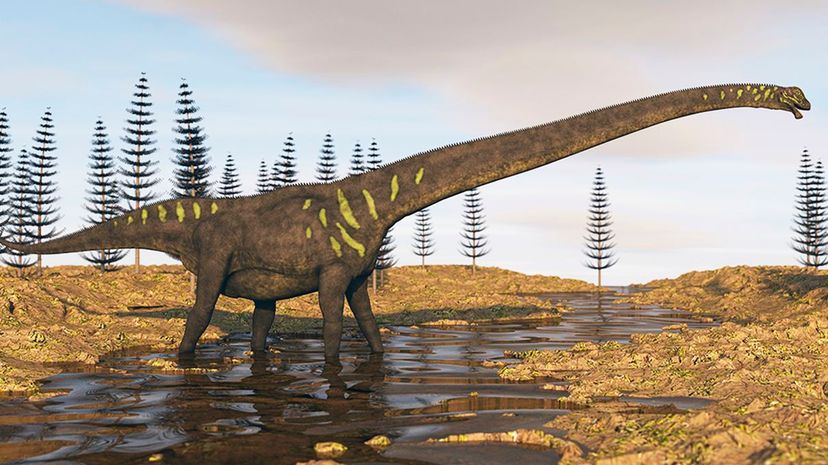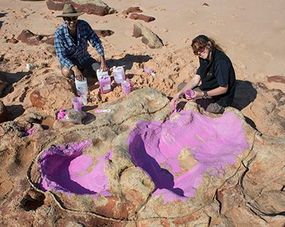
We live in a time of dainty little animals. After the fall of the dinosaurs, evolution decided to turn its laissez-faire attention to making miniature organisms like elephants. (We do have one stand-out colossus — the blue whale is likely the largest animal the world has ever known.) One of the enchanting things about terrestrial dinosaurs, besides their weird horns, proportions and protuberances, is the fact that being freaking immense was pretty commonplace back in the late Cretaceous.
But the discovery of a complete skeleton of one of these big guys is pretty much unheard of, so it's tough to know exactly which of the known prehistoric behemoths was the biggest. A good indication of the size of an animal is the size of its foot, if that's what you've got, and a new study out of the University of Queensland (UQ) describes a recently discovered dinosaur track found on the Dampier Peninsula on Australia's western coast that might belong to the biggest-ever terrestrial dino. If nothing else, it certainly had the biggest foot we know about.
Advertisement

The Dampier Peninsula is a spot archaeologists call "Australia's Jurassic Park" or the "Cretaceous Serengeti" because it's like the fossil remains of a dinosaur zoo. The prints of 21 dinosaur species, all from the same time period, have been discovered in the 15.5-mile (25-kilometer) site called Walmadany — that's the most dinosaur diversity ever found in one place. Thousands of tracks have been discovered, and 150 of them have been linked to specific species of dinosaurs: predators, armored dinosaurs, two-legged herbivorous ornithopods, and long-necked herbivorous sauropods. Walmandany is also home to the only confirmed stegosaur found in Australia.
Last year a dino print was found in Mongolia's Gobi Desert, measuring in at 3.5 feet (106 centimeters) long and 2.5 feet (77 centimeters) wide, which researchers thought might hold the world record for biggest land dinosaur — it was more than 98 feet (30 meters) long and 66 feet (20 meters) tall. But the UQ researchers uncovered a print even bigger at Walmadany — a sauropod track more than 5.5 feet (1.7 meters) long, indicating the animal was probably around 17-18 feet (5.3-5.5 meters) tall at the hip. A giraffe could probably gaze only at this animal's rear end without having to look up.
Nothing more is yet known about this animal, but Walmandany was included in the listing of the West Kimberley National Heritage Place in 2011 — an area that was once targeted for hosting a giant natural gas processing project — so though 400 hours have been spent by researchers studying these prints, the site will be protected for further study. This UQ video featuring paleontologist Steve Salisbury dives deeper into the recent discovery:
Advertisement